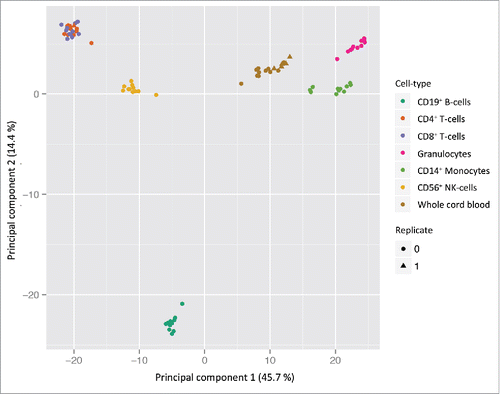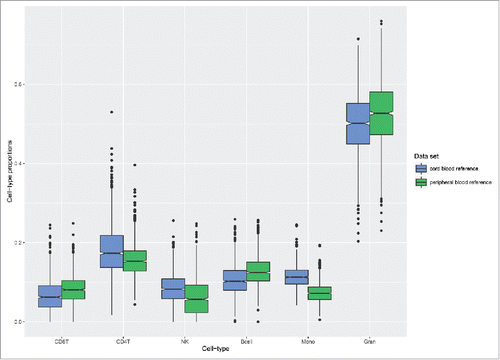Figures & data
Figure 1. PCA scatterplot of cell type specific DNA methylation in cord blood. PCA from DNA methylation measurements at 398 133 probes in 6 cell types and cord whole blood isolated from 11 samples (n = 77). The two first principal components are plotted with the proportion of variance explained by each component indicated next to the axis labels. The plot clearly shows distinct clustering of the different cell types and most of the variance in DNA methylation can be attributed to the different cell types. No detectable technical variation (bisulfite conversion and BeadChip) was measured by the technical replicates (n = 7).

Figure 2. Estimated cell type proportions in cord blood samples. Box plots of the estimated cell type proportions in cord blood samples selected from an independent birth cohort (MoBa, n = 1092). The blue boxes represent the estimates generated by the present cord blood reference data set and the green boxes represent the estimates generated by the adult reference data set. The boxes signify the upper and lower quartiles, and a black line within the box of each data set denotes the median.

Figure 3. Comparison of estimated cell types and matched cell counts. A) Scatter plots of estimated cell type proportions and matched cell counts in the reference cord blood samples from which 5-part diff counts were available (n = 9). The estimated cell type proportions of CD4+, CD8+, NK, and B-cells were collapsed to one lymphocyte category to enable comparison with the cell count data. B) Scatter plots of estimates and matched cell counts in an individual birth cohort (Generation R, n = 195). Smoothening lines represents the linear model.

